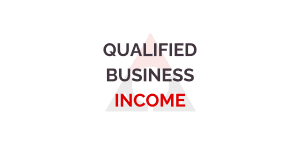As 2022 came to an end, a bill known as the SECURE Act 2.0 was passed into law. As with it’s predecessor, passed in 2019, the act brings about a number of changes to the retirement planning landscape. One of the predominant themes of the bill was the “rothification” of the retirement landscape and a number of new avenues for Roth accounts to be used and funded. Below we will review five new opportunities to increase your Roth money on your balance sheet.
Catch-Up Contributions
Roth catch-up contributions in 401(k) plans have been available, assuming a plan offers a Roth component, prior to SECURE 2.0 in addition to pre-tax catch-up contributions. Starting in 2024, the pre-tax option will go away for high income individuals whose wages exceeded $145,000 in the prior year.
For those the feel appropriate, deferral contribution will be able to be made using the pre-tax source. In 2023, the deferral and catch-up limits are:
- Deferral – $22,500
- Catch-Up – $7,500
Example: John, age 51, would like to maximize his contribution to his 401(k) in 2024 and make pre-tax contributions where possible. As the limit’s currently stand, he would be able to contribute a total of $30,000 including catch-up and could have total additions including employer match and after-tax contributions totaling $73,500. He can contribute $22,500 as a pre-tax contribution and $7,500 as a Roth catch-up contribution.
Beginning in 2025, the catch-up contribution limit for 401(k) plans will be increasing to the great of $10,000 or 50% higher than the regular catch-up amount for those age 60-63. This change will provide a window to save even more into Roth for those in the allowable age range.
Roth SEP and SIMPLE IRA’s
SEP and SIMPLE IRA’s are retirement plan solutions that are commonly used by sole proprietors or small business owners. Each account type has their own pros and cons that should be reviewed and considered before utilizing.
Prior to 2023, these account types only offered pre-tax contribution options but that has changed starting in 2023 to provide a Roth contribution option. This will provide business owners and their employees with the ability to set aside Roth funds to a potentially substantial degree. SEP IRA’s have a maximum contribution of $66,000 in 2023 and an additional catch-up of $7,500 that can now all be Roth if an individual has the net income to support the contribution.
Roth Employer Match
Historically, employer match and profit sharing contributions have always been pre-tax contributions into a 401(k) or similar plan. With the passage of SECURE 2.0, employees will now have the opportunity to elect to receive Roth employer matching if their plan allows.
By electing to receive a Roth match, the employee will be subject to income tax on the match amount. This will have an impact on withholding and that individuals tax bill each year. The matching contributions can only be given Roth treatment if they are not part of a vesting schedule (meaning they most be non-forfeitable).
529-to-Roth Transfers
The ability to complete a 529 to Roth IRA rollover will become effective starting in 2024 and will be subject to a lifetime limitation of $35,000. The funds that are transferred will be considered a contribution and therefore subject to applicable contribution limits (currently $6,500 per year if under 50.
In order to make a contribution, the Roth owner must have earned income to support the contribution, but transfers are not subject to income limits or phase-out restrictions. This means that the 529 beneficiary could add to their Roth IRA if they are over the income cap to contribute.
For a 529 plan to be eligible, the plan must have been established for at least 15 years and no funds (or their associated earnings) that were contributed in the last 5 years can be used. Funds will be treated on a first in, first out (FiFo) basis for this calculation.
Roth Employer Plan RMD’s
Prior to SECURE 2.0, RMD’s were not required from Roth IRA’s but they were included in the calculation for determining RMD’s for a 401(k). Beginning in 2024, the Roth source of a 401(k) plan will be excluded from the RMD calculation for a participant. While this change removes a common incentive to roll funds over to an IRA it is still important to review a plans distribution options prior to reaching RMD age to ensure unwanted or unfavorable distributions will not be required.
Delayed RMD Age
The Original SECURE Act of 2019 pushed RMD age back to 72. The SECURE Act 2.0 increased the first time RMD age to 73 with an additional increase to age 75 for those born in 1960 and later.
As we have detailed in our previous post on the retirement tax planning window, many savers who have built substantial pre-tax retirement assets over their career will find themselves in a position to be required to take much more than they need when their RMDs begin. The delay in the first time RMD age will give those individuals an extra 1 to 3 years to convert monies to Roth and potentially save on taxes.
Disclosure: The content provided herein is based on an interpretation by Michael Dunham of the SECURE Act 2.0 and is not intended to be legal advice or provide a tax opinion. Please discuss these matters with the appropriate professional. This document is a summary only and not meant to represent all provisions within the SECURE Act 2.0. RMD’s are generally subject to federal income tax and may be subject to state taxes. Consult your tax advisor to assess your situation.




